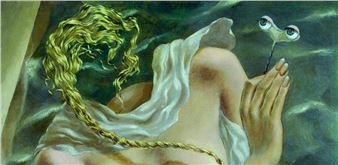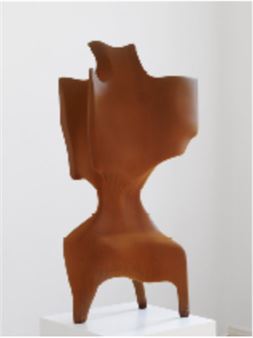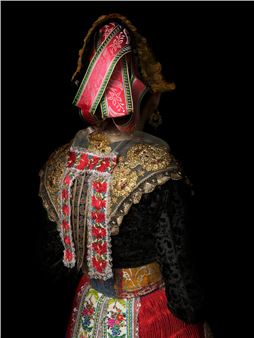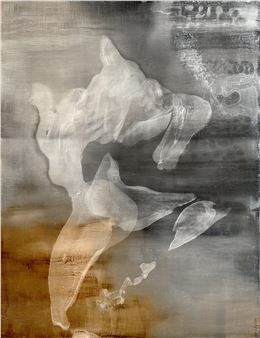Kandinsky, Malevich, Mondrian: The Infinite White Abyss
The K20 explores in its exhibition the complex subject of the white surface in the works of Wassily Kandinsky, Kasimir Malevich and Piet Mondrian. White was for the avant-garde pioneers not only an element in their colour palette ÔÇô it was a symbol of a future world.
At the beginning of the 20th century many artists distanced themselves from art as imitation of reality. Among those who began to explore abstraction were Wassily Kandinsky, Kasimir Malevich and Piet Mondrian. What distinguished these three avant-garde artists was that they saw non-representational art as the harbinger of a higher spirituality and a new social order. They felt that every step taken away from naturalistic imagery and in the direction of pure line, colour and form brought them greater freedom.
The white surface played a crucial role for all three artists. In MalevichÔÇÖs paintings, the white background is a void before which his geometric shapes seem to float. White was for Malevich non-objectivity in utmost perfection ÔÇôevoking the ideal of a positively evolving society. With great enthusiasm, he urged his fellow artists in 1919 to ÔÇ£swim in the white free abyss, infinity is before youÔÇØ. For Wassily Kandinsky, the white field symbolises a world in which all colours have vanished. White, according to Kandinsky, ÔÇ£affects our psyche like a silence of great magnitude.... This is not a dead silence. It is full of potential.ÔÇØ Piet MondrianÔÇÖs panel paintings, with their juxtaposition of the primary colours red, yellow and blue with the non-colours white, black and grey, express a longing for universal harmony.
Numerous exhibitions have been devoted over the years to the work of these important avant-garde artists ÔÇô but now the Kunstsammlung Nordrhein-Westfalen is for the first time showing at the K20 works from the years 1909 to 1941 selected specifically for their handling of the colour white. The exhibition will in addition examine in detail the influences to which the three artists were subjected in their day, conveying these by way of interdisciplinary presentations.
Based on the artistic concepts of the three avant-garde painters, the contemporary artist Olafur Eliasson is developing in conjunction with the Kunstsammlung a room designed to rensensitise viewers and prepare them in a surprising way for the exhibition while permanently raising their awareness of the complex perceptual and material qualities of white.
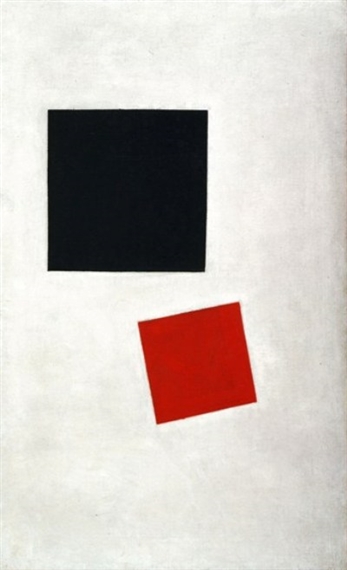
Recommended for you
The K20 explores in its exhibition the complex subject of the white surface in the works of Wassily Kandinsky, Kasimir Malevich and Piet Mondrian. White was for the avant-garde pioneers not only an element in their colour palette ÔÇô it was a symbol of a future world.
At the beginning of the 20th century many artists distanced themselves from art as imitation of reality. Among those who began to explore abstraction were Wassily Kandinsky, Kasimir Malevich and Piet Mondrian. What distinguished these three avant-garde artists was that they saw non-representational art as the harbinger of a higher spirituality and a new social order. They felt that every step taken away from naturalistic imagery and in the direction of pure line, colour and form brought them greater freedom.
The white surface played a crucial role for all three artists. In MalevichÔÇÖs paintings, the white background is a void before which his geometric shapes seem to float. White was for Malevich non-objectivity in utmost perfection ÔÇôevoking the ideal of a positively evolving society. With great enthusiasm, he urged his fellow artists in 1919 to ÔÇ£swim in the white free abyss, infinity is before youÔÇØ. For Wassily Kandinsky, the white field symbolises a world in which all colours have vanished. White, according to Kandinsky, ÔÇ£affects our psyche like a silence of great magnitude.... This is not a dead silence. It is full of potential.ÔÇØ Piet MondrianÔÇÖs panel paintings, with their juxtaposition of the primary colours red, yellow and blue with the non-colours white, black and grey, express a longing for universal harmony.
Numerous exhibitions have been devoted over the years to the work of these important avant-garde artists ÔÇô but now the Kunstsammlung Nordrhein-Westfalen is for the first time showing at the K20 works from the years 1909 to 1941 selected specifically for their handling of the colour white. The exhibition will in addition examine in detail the influences to which the three artists were subjected in their day, conveying these by way of interdisciplinary presentations.
Based on the artistic concepts of the three avant-garde painters, the contemporary artist Olafur Eliasson is developing in conjunction with the Kunstsammlung a room designed to rensensitise viewers and prepare them in a surprising way for the exhibition while permanently raising their awareness of the complex perceptual and material qualities of white.
Artists on show
Contact details


 ARTISTS
ARTISTS










